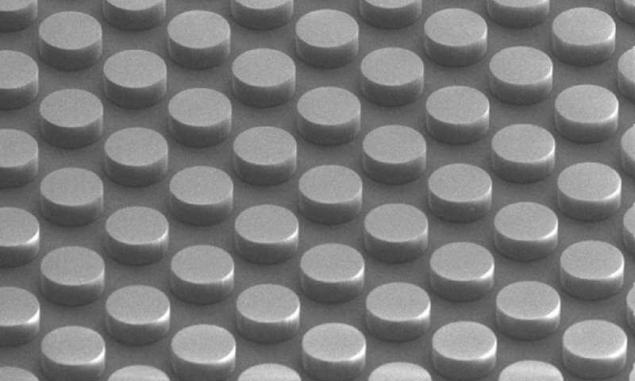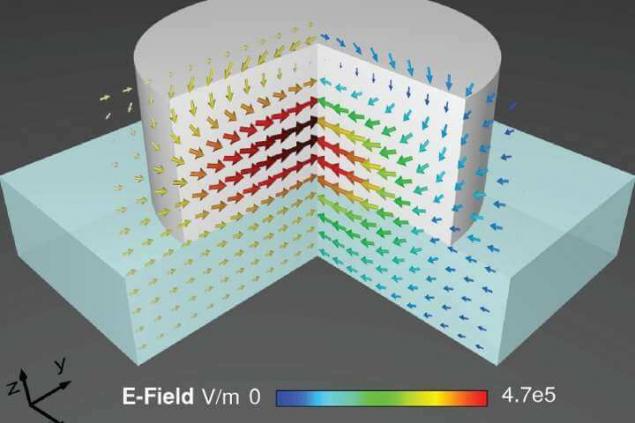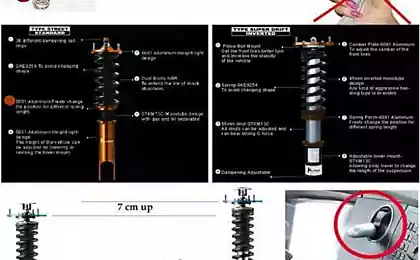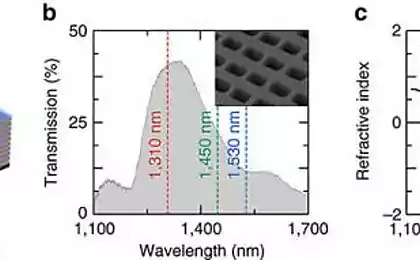457
New metamaterial absorbs electromagnetic energy without heating
Metamaterials (Metamaterials) are synthetic materials consisting of many separate components , which together give the properties which are not found in nature. Imagine electromagnetic waves moving through a flat surface made of thousands of tiny electrical cells. If researchers can adjust each element for the manipulation of waves in a certain way, they may ask how the wave should behave as a single unit.

To manipulate electromagnetic waves, the researchers usually had to use the electrical conductivity of metals. However, this approach brings with it a fundamental problem of metals — the higher the conductivity, the more the material is heated. This limits their use in temperature-sensitivity processes.
In his new work, electrical engineers from Duke University demonstrate the first fully dielectric (non-metallic) electromagnetic metamaterial, the surface of which is covered with a cylinder as the surface of Lego blocks, which are designed to absorb terahertz waves . Due to the fact that this frequency range lies between the infrared waves and microwaves, the approach can be applied to virtually any frequency of the electromagnetic spectrum.
"People created this type of device before, but previous attempts with the dielectrics was always paired with some metal," said Willie Padilla, a Professor of electrical and computer engineering at Duke University. "We still need to optimize the process, as the development of several technologies will be much easier with metamaterial than with metals ".

Let's look more closely at one of the cylinders contained in the new non-metallic metamaterial. The arrows show how the various aspects of the electromagnetic field interacting with the cylinder.
Padilla and his colleagues have created a metamaterial made of silicon covered with forest. Using computer modeling, they calculated how terahertz waves will interact with the cylinders of different heights and widths.
The researchers then manufactured the prototype, consisting of hundreds of optimized cylinders aligned in a row on a flat surface. Physical tests showed that the new "Metropolitanate" ("metasurface") absorbs 97.5% of the energy produced by waves at a frequency of 1,011 THz.
Effective absorption of energy of electromagnetic waves is an important property for many technologies and applications. For example, thermal imaging devices can operate in the terahertz range, but because previously they were partially applied to the metal, and getting sharp images was a challenge."Heat is distributed in the metal quickly, that is a problem for imagers," said Liu Xinyu, laboratory of Padilla and co-author of the article. "There are ways to isolate the metal in the manufacturing process, but it becomes a cumbersome and costly process."
Other potential uses for the new technology is effective lighting. Incandescent lamps give light, but also produce significant amounts of unused heat. They must work at high temperatures, for receiving the light, which is much higher than the melting point of most metals.
"We can produce dielectric netpowersoft designed to emit light without producing the waste heat," said Padilla. "Despite the fact that we were able to do it with the help of metamaterials on metallic base, the material will still have to work at high temperature. Dielectric materials have a melting point much higher than metals, so we are trying to move this technology into the infrared spectrum, to illustrate such a lighting system". published
Source: ecotechnology

To manipulate electromagnetic waves, the researchers usually had to use the electrical conductivity of metals. However, this approach brings with it a fundamental problem of metals — the higher the conductivity, the more the material is heated. This limits their use in temperature-sensitivity processes.
In his new work, electrical engineers from Duke University demonstrate the first fully dielectric (non-metallic) electromagnetic metamaterial, the surface of which is covered with a cylinder as the surface of Lego blocks, which are designed to absorb terahertz waves . Due to the fact that this frequency range lies between the infrared waves and microwaves, the approach can be applied to virtually any frequency of the electromagnetic spectrum.
"People created this type of device before, but previous attempts with the dielectrics was always paired with some metal," said Willie Padilla, a Professor of electrical and computer engineering at Duke University. "We still need to optimize the process, as the development of several technologies will be much easier with metamaterial than with metals ".

Let's look more closely at one of the cylinders contained in the new non-metallic metamaterial. The arrows show how the various aspects of the electromagnetic field interacting with the cylinder.
Padilla and his colleagues have created a metamaterial made of silicon covered with forest. Using computer modeling, they calculated how terahertz waves will interact with the cylinders of different heights and widths.
The researchers then manufactured the prototype, consisting of hundreds of optimized cylinders aligned in a row on a flat surface. Physical tests showed that the new "Metropolitanate" ("metasurface") absorbs 97.5% of the energy produced by waves at a frequency of 1,011 THz.
Effective absorption of energy of electromagnetic waves is an important property for many technologies and applications. For example, thermal imaging devices can operate in the terahertz range, but because previously they were partially applied to the metal, and getting sharp images was a challenge."Heat is distributed in the metal quickly, that is a problem for imagers," said Liu Xinyu, laboratory of Padilla and co-author of the article. "There are ways to isolate the metal in the manufacturing process, but it becomes a cumbersome and costly process."
Other potential uses for the new technology is effective lighting. Incandescent lamps give light, but also produce significant amounts of unused heat. They must work at high temperatures, for receiving the light, which is much higher than the melting point of most metals.
"We can produce dielectric netpowersoft designed to emit light without producing the waste heat," said Padilla. "Despite the fact that we were able to do it with the help of metamaterials on metallic base, the material will still have to work at high temperature. Dielectric materials have a melting point much higher than metals, so we are trying to move this technology into the infrared spectrum, to illustrate such a lighting system". published
Source: ecotechnology























